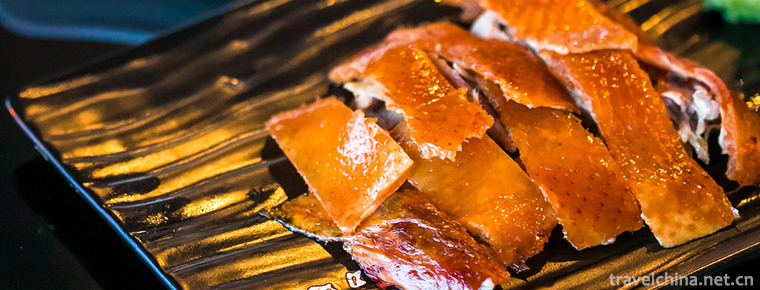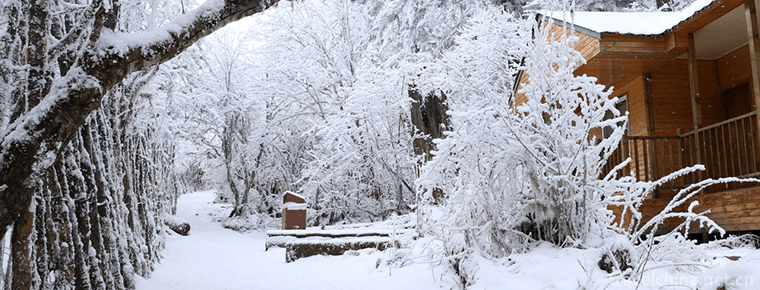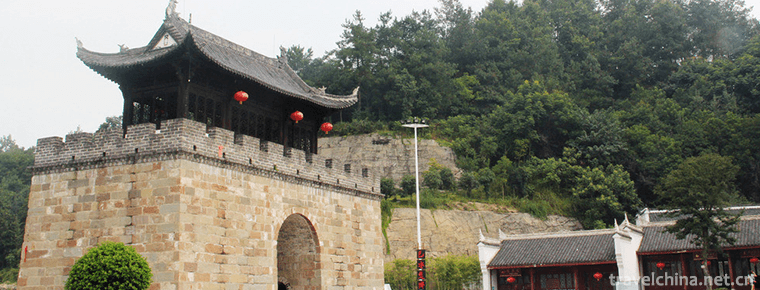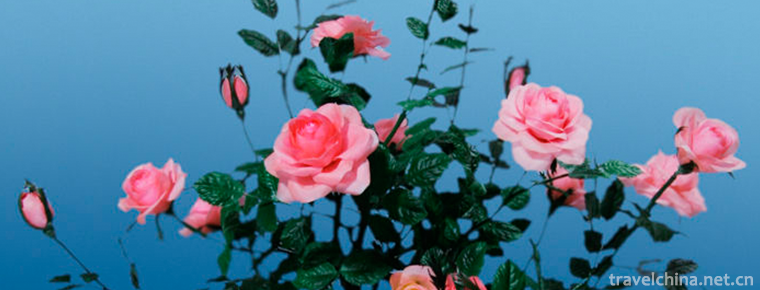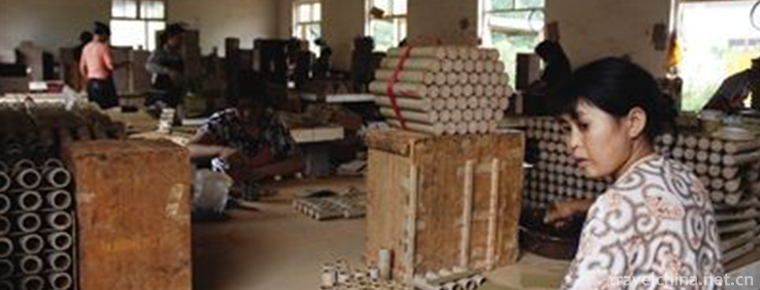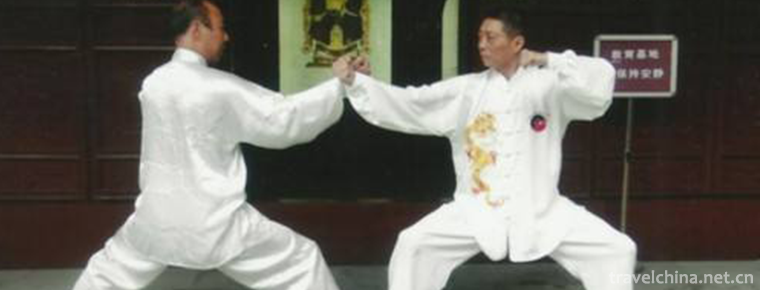Miao painting
Miao painting
Miao painting, as one of the representatives of Miao culture in Western Hunan, has the characteristics of Miao nationality and is mainly popular in the Miao area of Western Hunan. Miao painting originally appeared as a form of Miao girls'embroidery drawings, and later developed into an independent kind of painting. Miao paintings of various styles can often be found in the door curtains, curtains, clothing, quilts and room decorations of Miao residence in Western Hunan. It is of great significance to the local cultural dissemination and communication with the outside world. Miao painting has great potential in the tourism product development market. It is also of great significance for the design and innovation of modern textile fabrics.
On May 23, 2011, Miao Painting was approved by the State Council to be included in the third batch of intangible cultural heritage.
Historical origin
Miao people do not have their own words. Besides Miao costumes, Miao batiks, Miao files, Miao embroidery, Miao songs and folk houses, which are the carriers of Miao history and culture, they bear the role of cultural inheritance. An ancient Miao painting originating from ancient sacrificial gods and wax flags, which is born out of Miao embroidery and rooted in Miao cultural symbols, also undertakes the responsibility of part of cultural inheritance.
Miao people are a people who love beauty and embroidery. They attach great importance to dress and wear. Miao painting is an ancient, simple and highly decorative art form created by the Miao people according to their own way of life and aesthetic consciousness. Originated from ancient Pu people's carved tattoos, "Li Jade System": "Oriental Riyi, Hair Tattoo... South Riman, sculpture, toe-to-toe..." Sculpture: It is also called carving; Title: Borrowing amount is also; It is said that it has been green, carved amount. In the Zhou Dynasty, Miao people began to have chisel flowers because of their higher and higher requirements for beautiful life. Paper-cut used in various clothing and decorations is called chisel flower, that is chisel pattern. People in Western Hunan are used to call it "tie flower" or "file paper", also known as "file flower". Chiseling provides embroidery models for embroidery, and embroidery contributes to the continuous innovation of chiseling patterns. Miao women usually cut out the conceived patterns and stick them on the surface of the cloth to be embroidered, then wear needle-punched embroidery as usual. This part of the extension and cutting work gradually became a kind of work, separated from the embroidery process, and some paper-cut artists specializing in cutting the bottom pattern of embroidery also appeared. Compared with the simple use of scissors reaming, paper-cut gardeners in pursuit of efficiency, the use of cutting knives for small batch processing reproduction of chisel technology emerged as the times require. With the continuous enrichment of patterns and themes, coloring has gradually become a demand. Embroidery workers tend to be simple and easy, which puts forward the requirements for chiselers to improve the process. Chiseling takes too much time, and is prone to deviation in the process of chiseling, and can not chisel out the color. Thus, some artists dared to change "chisel" to "painting" and directly draw patterns on paper for embroidery. This not only reduces the time and saves the cost, but also artists directly add color to the pattern, making it gradually become an independent decoration, "painting and embroidery" to beautify people's lives.
Miao paintings are not only a production and decoration form for Miao women to beautify their lives, but also a carrier of image symbols reflecting Miao culture. Miao people do not have their own words, and the information of their national culture, besides spoken language, is other patterned language such as Miao paintings. It can be said that the original ecological art of Miao paintings inherits the cultural information and traditional auspicious graphics of Miao people well. Therefore, the Miao painting, which is "painted on paper and cloth, hanging in any position needed", has become the most vivid historical book of Miao culture.
Seedling pattern
The Content of Miao Picture Patterns and Primitive Religious Concepts
Primitive religious concept, also known as natural religion, refers to the various beliefs of gods that emerged naturally in the initial stage of human beings under the chaotic thinking condition of "animism of all things" infiltrating into each other. Miao people also have this primitive religious concept, believing in "natural god" and "totem worship".
The themes expressed in the Miao paintings imply festivity, auspiciousness and prosperity of life, and express the Miao people's wishes for a better life. This makes some researchers generally regard it as a category similar to ordinary folk art, and the information contained in the Miao polytheism is seldom noticed. In fact, the patterns in Miao paintings trace the historical experience and cultural worship of the Miao people, and reflect a belief system under the multi-god concept of the Miao people.
Miao paintings are mostly embroidered patterns of various costumes, which generally have specific external shapes. Its shape is either rectangular, circular or polygonal, or arbitrary. This is mainly determined by the embroidery parts in the seedling clothes. Colorful Miao paintings are mostly based on the symbols of auspiciousness, such as "phoenix wearing peony", "dragon and Phoenix showing auspiciousness", "magpie making plum" and the mountain flowers, wild plants and various animals in the Miao Mountains of Western Hunan, with a wide range of themes. Miao painting is like embroidery, gorgeous but not vulgar, very vivid.
In Miao people's aesthetic conception, peony represents the most beautiful flower and Phoenix represents the beautiful bird. Therefore, in Miao paintings, the shape of peony varies, and what the painter pursues is the perfection of the whole picture. In Miao paintings, Qilin, dragon, Phoenix with auspicious meanings and commonly seen rhombus, butterfly, fish, bird, insect, shrimp, bat, magpie and flowers (plum and peony) are selected to reflect festivity, auspiciousness, longevity and abundance. There are also geometric pictures and texts reflecting the general features of the ancient ancestors'migration along the way, such as mountains, rivers, clouds, sunshine, moon, figures, buildings, fairies and gods in legends, and the myth "Carp Leaping Dragon Gate" which reflects the folklore of the Miao people. Miao painters adopt a combination of realism and abstraction, exaggeration and distortion, freedom and seriousness, and then integrate themselves into their inner world and thoughts and feelings, making Miao paintings have both primitive and passionate features, achieving a harmonious unity of truth, goodness and beauty, reflecting the perfect combination of classical art and modern art, and forming an important cultural symbol in the unique living environment of Miao nationality. 。
Miao pictures also have reproductive worship, such as the crossing of two winds, gourds, fish and birds in the pictures, all show people's instinctive ideal of survival and reproduction.
Composition of Miao Painting Patterns
The composition of Miao painting pattern can be divided into five forms: branch pattern, Tuo pattern, corner pattern, edge pattern and square pattern. Branch pattern is a completely independent individual pattern, such as a flower, a bird. A butterfly, etc., is mainly used to fill the empty parts of the pattern, making it smooth, compact and active. Tuo pattern is a large independent unit which has no connection and repetition with its surroundings. It is composed of circles, squares, pentagons, hexagons, octagons, diamonds and so on in a certain form. Tuo pattern is widely used. Small ones can form laces, and large ones can be used in the middle of large-scale pictures or in separate applications. Corner pattern is a kind of decorative pattern which can be applied alone or combined with Tuo pattern to form a complete decorative pattern. It can take several forms, such as bilateral symmetry, bilateral symmetry, trilateral symmetry and free form. Edge pattern is extended in two directions according to certain circumference. It can be divided into straight line and non-straight line. It can also be divided into symmetrical continuity, non-symmetrical continuity and symmetrical discontinuity. Square pattern is a large pattern which is composed of a basic pattern and circulates continuously to the surrounding area. It has several forms, such as scatter pattern, conjunction pattern, overlap pattern and so on. Different combinations of Miao paintings have different meanings. These forms are not rigid, and they are all inspired by painters until they are finished.
Current situation of Miao painting
Miao painting was once faced with loss of inheritance. Only through the painstaking inheritance and innovation of three generations, Liang Qirui, Liang Yongfu and Liang Desong, could it regain its vitality.
At the beginning of the last century, with the death of old artists, Miao Pictures were in a dilemma of being lost. On the verge of disappearance, Liang Qirui of Paddy Field River Town in Baojing County inherited the Miao painting and constantly enriched the subject matter of painting. Later, Liang Qiurui taught his son Liang Yongfu the skills of Miao painting. Liang Yongfu boldly innovated, adding various colors to his paintings, and developed the traditional monochrome prototype into five-color seedling paintings. At the same time, Miao paintings originally only depicted on cloth were developed to be painted on Xuan paper and gouache paper. The contents of the paintings are drawn from a wide range of materials, mostly for the symbols of auspiciousness, such as "dragon and Phoenix are auspicious", "magpies and plums" and flowers, birds, fish and insects.
Liang Yongfu's Miao Paintings are called "Baojing Miao Paintings" cordially because of their colorful, vivid taste, strong national characteristics and high aesthetic value. In 1987, he participated in the exhibition of Hunan folk crafts and exhibited in Beijing. His masterpieces, 6 meters long and 2.5 meters wide, were collected by the China Museum of Arts and Crafts. In 2006, his three Miao paintings, Shuangfeng Chaoyang and Longfeng Brocade Chicken, were selected into the National Folk Art Exhibition of Western Hunan Style, Calligraphy, Fine Arts and Photography, and went to Shanghai for exhibition.
Liang Desong, Liang Yongfu's son, has been learning painting since he was 7 years old. He has been engaged in the creation of Miao painting for nearly 40 years. He used the combination of realism and abstraction, exaggeration and distortion, freedom and rigor, and then integrated his own thoughts and feelings, making Miao paintings both primitive and passionate and full of romantic style, reflecting the high unity of the aesthetic pursuit of classical art and modern art, and forming the Miao cultural symbols in a unique living environment. The charm of Liang Desong's Miao paintings lies in his meticulous color matching, which emphasizes not only the contrast of background color and pattern color, but also the harmony between them. He also pays attention to the line and crossing of main and auxiliary colors, as well as the distinct and blending of decorative objects and application occasions. His works, through coordinated and gorgeous colors, give people the enjoyment of beauty and great visual impact, rich in local flavor and artistic appeal.
In May 2009, Feng Jicai, Vice-Chairman of the Chinese Federation of Literature, Chairman of the Chinese People's Federation and National Expert on the Protection of Intangible Cultural Heritage, went to Xiangxi for a cultural investigation. When he saw Liang Desong's Miao paintings, he marveled at their skilled painting skills, sophisticated brushwork and sophisticated color design. He said that Baojing Miao paintings were a business card in Western Hunan and should be protected and inherited.
Liang Desong has many works collected by provincial and state museums. In October 2009, his work "Shuangfeng Chaoyang" won the gold medal of "Hunan, Hubei, Chongqing and Guizhou Border Area National and Folk Tourism Commodities and Folk Crafts Master Competition", and I was awarded the title of "Folk Crafts Master". In the contest, someone paid 20,000 yuan to buy the gold medal "Shuangfeng Chaoyang", because he gave up. In 2008, Liang Desong was also selected as the provincial inheritor of intangible cultural heritage.
In 2008, Liang Desong took the Miao paintings raised in her boudoir out of the mountains and opened his own studio and shop in Jishou. Miao paintings began to attract more people's attention. While devoting himself to creation, he also spares no effort to cultivate the inheritors, so that the flower of Baojing Miao Painting, a folk art, blossoms more beautifully.
Inheritance significance
Miao painting has a long history, which is of great value to the study of Miao history, culture, production and life, commodity trade, folk beliefs, folk art and so on. The theme of the Miao paintings in Western Hunan is to reflect an image of festivity, auspiciousness and prosperity of life. The Miao paintings created by Liang's family take dragon, phoenix, flower, grass, fish, shrimp, insect, bird, bamboo and wood as the main expressive content, and then match with clan totem worship patterns. They combine the tribal migration reflecting the ancient ancestors with the mountains, rivers, clouds, sunshine and moon, figures, buildings and fairies and gods in the natural world. They are realistic and abstract, exaggerating and exaggerating. The combination of deformation, freedom and rigor, and the integration of their inner world and thoughts and feelings, make Miao painting both primitive and passionate and romantic, achieve the harmonious unity of truth, goodness and beauty, embody the combination of classical art and modern art aesthetic pursuit, highlight a very unique aesthetic value, and form a unique living environment of the Miao nationality. Unique cultural symbols. The charm of Miao painting lies in the rich cultural connotation contained in every pattern and color matching, which represents a certain historical record and can give Miao people a kind of spiritual comfort and satisfaction.
It is an important part of recording the history and culture of the Miao people. The geometric patterns of the pictographs it represents, tracing the historical experience of the Miao people and the general outline of the secret traces that culture advocates. This silent tracing and aesthetic decoration are combined to form a wordless heavenly book under harsh conditions. It is also the carrier of Miao's spiritual thoughts and wisdom skills. At the same time, it is also a bridge to communicate feelings and a source of income.
It also has cultural and artistic value and is a precious ancient heritage from the perspective of cultural anthropology. From the perspective of religion, it retains all kinds of spiritual symbols left over from ancient times, such as natural worship, totem worship, ancestor worship and even sexual worship. It is a precious "living fossil" for people to study the religious origins of ancient China. From the perspective of science and folk craft, it is a huge carrier, which gathers rich elements of each link of process production, and provides first-hand information for the study of Miao's process aesthetics.

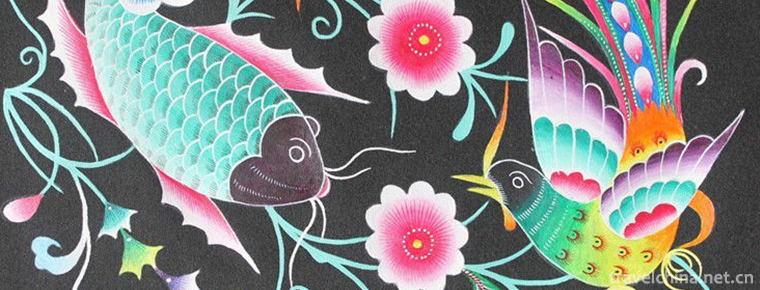
-
Beijing Roast DuckPeking duck
Roast duck is a world-renowned Beijing dish, which originated in the Northern and Southern Dynasties of China. It has been recorded in the Record of Food Treasures and was a palace food at that time.P.
Views: 136 Time 2018-10-27 -
Conch Valley Scenic Area
Hailuogou is located in Moxi Town, Luding County, Sichuan Province, on the eastern slope of Gongga Mountain. It is a very high mountain area on the eastern edge of the Qinghai-Tibet Plateau.
Views: 182 Time 2018-12-12 -
Quyuan Hometown Tourist Area
The cultural tourist area of Quyuan's hometown is located in Fenghuangshan, Zigui County, Yichang City, with a total area of 33.3 hectares in the north, Gaoxia Pinghu Lake in the north.
Views: 137 Time 2018-12-12 -
Side wall ruins
The local people call it "Genghis Khan Wall", also known as "Jinjie Trench". It is the ancient Great Wall ruins spanning the left banner of Sunite, covering 100 square meters..
Views: 181 Time 2019-01-03 -
Lao Leshan Tourist Scenic Spot
Lao Leshan is located in the south of Henan Province, 9 kilometers southwest of Zhumadian City and 8 kilometers west of Queshan County. National Highway 107.
Views: 135 Time 2019-01-29 -
Stone Old Man Sightseeing Park
Shilao Sightseeing Park is located in Qingdao City to Laoshan Scenic Area, east of the fishing banquet in the Tang Dynasty, with an area of 1200 mu. Starting at the end of 1999.
Views: 201 Time 2019-02-08 -
Beijing silk flower
Beijing silk flower, one of the traditional handicraft products in Beijing, also known as "Beijing flower", originated in Shenmuchang Street outside Chongwenmen in Ming Dynasty.
Views: 179 Time 2019-04-04 -
Production Techniques of Liuyang Fireworks
Liuyang fireworks production in Hunan has a long history. According to records, it began in Tang Dynasty and flourished in Song Dynasty. During Kangxi period of Qing Dynasty, the production had a cons.
Views: 338 Time 2019-05-13 -
Gentle boxing
Mianquan is a kind of uniform, soft, round, coherent, rigid and soft traditional boxing, which belongs to the intangible cultural heritage of Shanghai. Its movement is soft like cotton, the shape and .
Views: 130 Time 2019-06-04 -
Guan Hanqing
Guan Hanqing (before 1234) - about 1300 The original name is unknown. The word "Han Qing" is already Zhai. The Han nationality is a member of the state of Yuncheng (Shanxi province). Another.
Views: 230 Time 2019-09-07 -
Music that Ding Zhen likes
Zhaxi Dingzhen (Chinese Name: Ding Zhen), Tibetan, lives in Litang County, Ganzi Prefecture, Sichuan Province..
Views: 144 Time 2020-12-07 -
Neijiang social security
In 2019, there were 109600 people participating in the endowment insurance (including retirees) of government institutions, 842500 people of enterprise employees (including retirees), and 1501700 people of urban and rural residents. 52100 new urban jobs.
Views: 353 Time 2020-12-16
